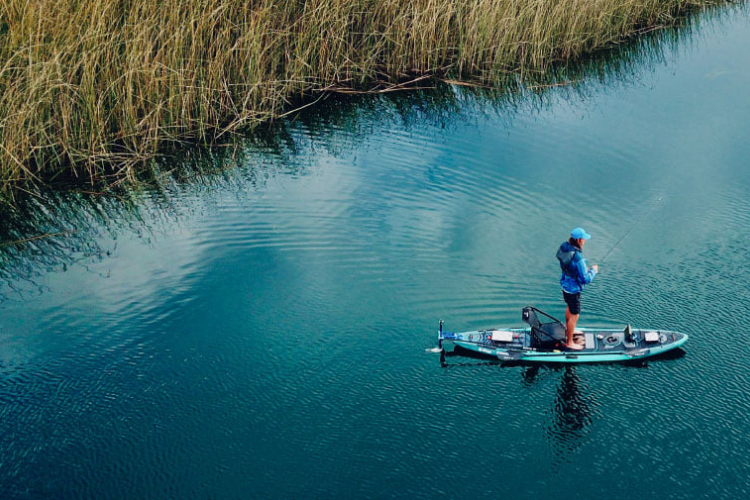
How To Fish With an Electric Outboard Motor
Bixpy CanadaShare
Stealth is one of the most underestimated factors in fishing. Every angler knows fish react to noise, but it’s not just about how loud a motor is, it’s about vibration, water displacement, and how consistently you can hold your boat where it needs to be. The best fishermen know that success often comes down to whether you can make repeated, accurate casts without alerting the fish that you’re even there.
The Advantage of Quiet Propulsion
Gas outboards are excellent for travel, but they’re overkill when you’re fishing close quarters or stalking pressured fish. Even at idle, a two-stroke announces itself with exhaust bubbles and low-frequency vibration that carries farther through water than most realize. Electric motors eliminate that acoustic footprint. With no combustion noise and very little cavitation at low speeds, they allow anglers to approach schools undetected. This is critical when fishing shallow flats for smallmouth, sliding over weed edges for pike, or working rocky points for walleye in clear Canadian lakes.
Where electric motors really shine is consistency. A steady, vibration-free drift lets you make cast after cast under the same conditions. Instead of constantly adjusting with a paddle which creates noise and movement, you can focus entirely on presentation.
Balancing Space and Utility
On kayaks, canoes, and smaller inflatables, space is always at a premium. Adding a trolling or outboard motor can eat into deck room, create tripping hazards, or complicate rod management. That’s why the choice of motor size and mounting system matters. A compact electric outboard integrates cleanly without forcing you to redesign your entire setup.
Think about where you normally store rods, nets, and tackle crates. Mounting a motor off the stern frees up your cockpit while keeping weight balanced properly. A low-profile battery system also ensures you’re not sacrificing storage space for power. For anglers who already fish out of minimalist craft, this balance between propulsion and fishability can make or break the setup.
Controlling Position in Wind and Current
Boat control is what separates casual days on the water from surgical fishing sessions. Anyone who has tried to hold a kayak steady in crosswind knows how frustrating it is to burn energy just trying to stay in place. An electric motor gives you micro-adjustments without pulling out a paddle, so you can keep your bow pointed at the strike zone.
One underrated tactic is using subtle bursts of thrust to maintain alignment with structure. For example, when vertical jigging on a reef edge, a quick tap forward or backward on the throttle holds you over fish without swinging you off the breakline. Similarly, on windy days, you can feather speed to drift naturally but stay slowed enough to keep baits in the strike zone. These fine corrections aren’t possible with paddles and are far less intrusive than overusing an anchor.
Trolling Precision
When trolling, boat speed and stability are everything. Too fast, and your lure loses action; too slow, and it won’t track correctly. Electric motors allow speed adjustments in increments as fine as 0.1 mph, something gas motors simply can’t match. That precision makes a huge difference when pulling crawler harnesses for walleye or slow-trolling spoons for trout.
Consistency is another advantage. Instead of dealing with surges common in gas motors at low throttle, electric power delivers smooth, uninterrupted propulsion. Your spread stays predictable, which directly affects hook-up rates. It’s also worth noting that trolling with an electric motor reduces fatigue during long days on the water, since you’re not constantly fighting to correct heading or restart noisy combustion engines.
A Practical Upgrade for Small Craft Anglers
For Canadian anglers fishing out of kayaks, canoes, or other compact boats, an electric outboard unlocks new water. Long paddles against current or wind can limit where you realistically fish, but with compact power, distant points, mid-lake humps, and back bays suddenly become viable without burning yourself out before the bite even starts.
The Bixpy K-1 Outboard Kit is built with these exact scenarios in mind. It’s compact enough not to eat into valuable deck space, quiet enough to stalk fish in clear, pressured waters, and precise enough to give you full control over positioning. For anglers who demand efficiency without compromising stealth, it’s a tool that keeps you focused on fishing instead of boat management.
Explore the Bixpy K-1 Outboard Kit to see how it can sharpen your edge on the water.


